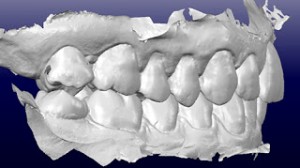Having been in orthodontic practice for 35 years, I’ve seen a lot of changes in all aspects of orthodontic care. Most changes have been totally under our control and are merely choices. Whether you choose to use self-ligating appliances or not impacts your mechanics but not really your ability to produce an excellent result. Most cases do not require a CBCT to adequately diagnosis or treatment plan to achieve that same excellent result. Robotic orthodontics, also known as pre-bent appliances, have benefits and drawbacks, but once again are unnecessary for creating that “perfect smile”. Most of us have never done more than dabble in lingual appliances; without any loss to our practice. And while clear aligner therapy has probably the greatest (potential) impact on the traditional delivery of orthodontic care, there are plenty of very successful orthodontic practices that presently don’t use it at all or only on a limited basis.
That being said, competition in the market place has changed significantly, from the outside. We can’t rely on the “gold plated” referrals from our GP colleagues like we once did. Second opinions are becoming the norm. We have one chance to develop a relationship while we present our treatment “design”. We deal less with patients and more often with consumers. Where we used to do exam / records / consultation on separate visits, the sequence has evolved for many of us into a single visit. We used to show our beautifully finished cases with plaster models and photos, or cut and pasted smiles from the AAO smile library and so forth. Today’s consumers want more.
The advent of CAD/CAM treatment planning and design software is changing all that. We now have the ability (and even possibly the responsibility) to do virtual treatment planning, trying out options and alternatives with accuracy and predictability. The ability to customize everything about treatment from the beginning goes beyond the capability to modify and adapt the otherwise generic prescriptions and archforms of the past to match the particular patient’s needs.
Tens of thousands of patients have seen their clear aligner predictions or pre-bent setups. This is changing the exam and consultation process. Patients are becoming aware that we can show them what their teeth will look like post treatment. An interactive approach to smile design and occlusion function is not only possible but a significant advance in marketing and patient appreciation of what goes into their treatment plan beyond just straight teeth.
For purists, one of the leaders in CBCT scanners is currently beta testing 3D integration of IO scans with CBCT imaging and computerized jaw tracking.
There are stand-alone software that permits visualization and treatment planning of IO scanned data, and some IO scanners come bundled with similar software. Some scanners are not only able to directly scan to aligner companies, but also come bundled with “Treatment Simulator” software.
While I am invested primarily in a single technology, I routinely use several of these and am doing trial runs of others. The learning curve is not terribly steep for any of these. And they all work.
The logistics of same day exams with IO scan and treatment simulation becomes the biggest hurdle. We do an office tour ending with a CBCT (with face scan) and photos, if the IO scanner is available and the patient has time, we do an IO scan. This combination takes 30-40 minutes (as opposed to 20-25 without IO scan). While we review CC and get acquainted, everything is loaded. The treatment simulation is run in the background (the 3 treatment algorithm choices are preselected).
After we have reviewed my diagnosis we look at the treatment simulation and start moving teeth to reflect my recommendations and patient wishes. This not only increases patient engagement but shows that I am intimately involved in the treatment design, not just letting the computer treatment plan for me. It helps explain tooth size discrepancies and why IPR may be necessary (even on extraction cases). We can measure expansion and torque requirements and cuspid inclination. And it is especially useful for pre-restorative setups; visualizing spacing and vertical setup, bonding undersize laterals, etc.. Multiple treatment scenarios can be done to help illustrate trade-offs in compromise cases.
Not only is there improved communication with and education of the patient/parent, but a unique understanding of the case above and beyond the “Old Days” where I fondled a set of soaped and polished study models or CR mounted models.
Finally, we can re-establish our reputation with consumers as the experts in orthodontics by using and properly explaining to them the benefits of this technology.
